|
By Faye Charpentier, History Program Director
Similar to greenery, the use of candles and lights in early Christmas observances were practices adopted from traditions predating Christianity. As explained by historian Stephen Nissenbaum - who literally wrote the book on Christmas in colonial New England -: “Most cultures (outside the tropics) have long marked with rituals involving light and greenery those dark weeks of December when the daylight wanes, all culminating in the winter solstice—the return of sun and light and life itself. Thus Chanukah, the 'feast of lights.' And thus the Yule log, the candles, the holly, the mistletoe, even the Christmas tree—pagan traditions all, with no direct connection to the birth of Jesus.”
The importance of light, however, holds its own significance in Christian tradition surrounding the birth of Jesus. In the Christian Bible, a “star in the East” shined above the town of Bethlehem, marking the location of the newborn, and providing a beacon that figures in the nativity story follow to visit the baby. References to “light” and “dark” appear throughout spiritual texts, including the historic liturgy used at King’s Chapel. From King’s Chapel’s founding in 1686 as New England’s first Anglican churches, the church followed the liturgy set forth in the Church of England’s 1662 edition of the Book of Common Prayer through the American Revolution in the 1770s. 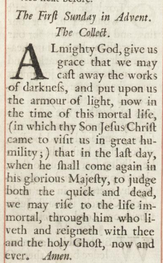 The Christmas season at colonial King’s Chapel would have kicked off with discussion of light as a symbol through the liturgy the minister would have read in Advent, the liturgical season of four weeks leading up to Christmas. This season, observed by much of Western Christianity, marks a time of literal and spiritual waiting and preparation for the arrival of their Messiah on Christmas (though, of course, we know the date of Christmas is arbitrary and without biblical basis). On the first Sunday of Advent, the King’s Chapel’s minister would read the following from the Book of Common Prayer: “Almighty God, give us grace that we may caft away the works of darknefs, and put upon us the armour of light, now in the time of this mortal life...The night is far fpent, the day is at hand; let us therefore caft off the works of darknefs, and let us put on the armour of light.”
“In him was life, and the life was the light of men, And the light fhineth in the darknefs, and the darknefs comprehended it not. There was a man fent from God, whofe name was John. The fame came for a witness to bear witnefs of the light, that all men through him might believe. He was not that light, but was fent to beat witness of that light. That was the true light, which lighteth every man that cometh into the world.” When King’s Chapel’s congregation revised their liturgy in the 1780s, the prayerbook committee maintained similar language for the Advent and Christmas texts, revealing this emphasis on “light” continued in the Unitarian theology of King’ Chapel that emerged in the 1780s. Literal light would not come to King’s Chapel until much later. The earliest known date for artificial light installation in the chapel was not until 1872 when partial gas lighting was installed, only to be replaced with electric lights just over fifteen years later in 1888. Without artificial lighting in the chapel prior to then, 18th and 19th century Christmas services -- along with nearly all other services and events at the church -- were held in the morning or afternoon, revolving around sunlight by necessity. Church records indicate that service times were moved slightly up in the day during the winter, when the sun set earlier than in the warmer months. Out of necessity, any services held later in the day or evening, prior to the 1870s, would have been candlelit, though the church did not have a central chandelier until 1927. Candlelight is now an atmospheric tradition of Christmastime at King’s Chapel and much more broadly in secular spaces, practices that formed throughout the latter half of the 19th century. 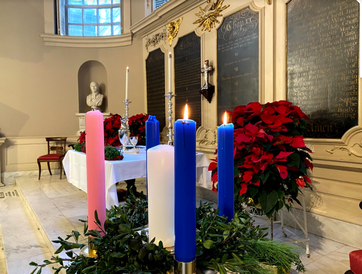 Advent wreath at King's Chapel Advent wreath at King's Chapel For many Christians, including those who worship at King’s Chapel, the Advent wreath is an iconic part of the weeks leading up to Christmas. In modern day, these evergreen wreaths feature a candle lit each Sunday during Advent - the Christian liturgical season leading up to Christmas. Similar to the Christmas tree, Advent wreaths originated in Germany. The modern Advent wreath was created by German missionary Johann Hinrich Wichern in the 1830s, as a sort of Advent calendar for children at his mission’s school who wanted to know how many days until Christmas. Wichern’s wreath originally had a red candle for each weekday and Saturday in Advent and a white candle to be lit each Sunday. Eventually, as the wreaths grew in popularity, they were simplified from 24 candles to 4, to be lit each Sunday. Today, the color of the candles varies among Christian churches. At King’s Chapel, three blue candles and a rose candle circle a white candle to be lit on Christmas. 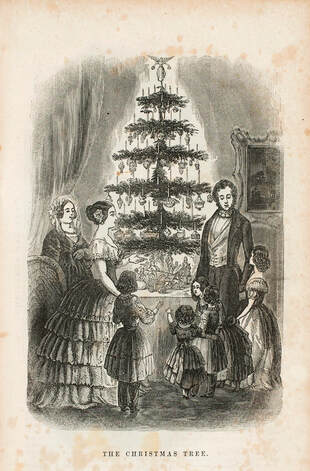 A contemporary Christmas tree isn’t complete without its strings of sparkling lights. Before string lights, people decorated their Christmas trees with real candles. Early illustrations of 19th century Christmas trees, like this widely-circulated illustration of the British royal family and their tree from the 1840s, show lit candles perched on the tips of many branches. Literally “trimming the tree” would have been important, to make sure no branches would interfere with the candles’ flames. Even at Charles Follen’s 1832 Christmas tree unveiling, an ornament was accidentally set on fire by one of the candles. Follen, a Unitarian minister, is thought to have introduced the first Christmas tree to New England, drawing inspiration from his childhood in Germany. Unfortunately, house fires caused by Christmas trees were not uncommon. The invention of string lights in the 1880s would lead to a new wave of holiday decor that still dominates the landscape today. The first strings of Christmas lights were invented in 1882, just two years after the incandescent light bulb was patented. Edward Hibberd Johnson, a colleague of Thomas Edison, hand-crafted a string of 80 bulbs in 1882 to decorate a tree in his parlor. Much like Charles Follen’s candlelit Christmas tree, Johnson’s Christmas lights drew local visitors and eventually became a growing tradition. The early string lights were expensive and mostly used in public displays, like those at department stores and in the homes of the wealthy.
An 1896 article published on December 15 in the Boston Daily Globe, boasts of a “Grand Christmas Display” with “electric lights in brilliant colors illuminat[ing] the whole front of the Mammoth Building with Enchanting effect.” The article goes on to describe various aspects of the decor, but is sure to mention the effect on other buildings nearby: “The brilliancy of the illumination was further set off by the glow of mellow golden light reflected on the other stately structures in the neighborhood. King’s Chapel and its sacred resting place close by were thus embraced in the scene of beauty.” While this is the earliest reference we have found at this time, the article alludes to 1896 not being the first year Houghton and Dutton put on such spectacular holiday light displays. A decade later, King’s Chapel is again mentioned in descriptions of the nearby department store’s decor. This 1906 article from The Boston Daily Globe writes: “The glow from the 6,000 incandescent lights studded over the face of the [Houghton and Dutton] building lights up King’s Chapel, just opposite, and gives to it a softened, beautified appearance, not found in daylight.”
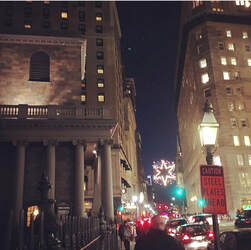 While Christmas lights were originally extremely expensive, as electricity grew more commonplace in the United States around the turn of the 20th century, lights became more accessible. By the 1930s, what was initially only available to the wealthy and for large scale public displays was making its way into homes of middle class Americans setting up Christmas trees. Christmas lights remain a highly visible aspect of holiday decorating. In 2020, residential and public holiday light displays are a safe way for many to get into the holiday spirit, through driving around decorated areas or going for a socially-distant walk to take in the lights in your neighborhood. Sources:
https://www.americanantiquarian.org/proceedings/44539478.pdf https://archive.org/details/gri_33125009081619/page/n63/mode/1up?q=light http://justus.anglican.org/resources/bcp/kings_chapel1785.pdf https://news.harvard.edu/gazette/story/2015/12/harvard-professor-brought-first-christmas-tree-to-new-england/ http://www.medienwerkstatt-online.de/lws_wissen/vorlagen/showcard.php?id=4506 ProQuest Historical Newspapers https://www.smithsonianmag.com/history/untangling-history-christmas-lights-180961140/
0 Comments
Leave a Reply. |
King's Chapel History ProgramDive deeper into King's Chapel's 337 year history on the History Program blog. Archives
July 2023
Categories
All
|
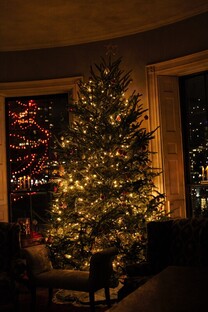
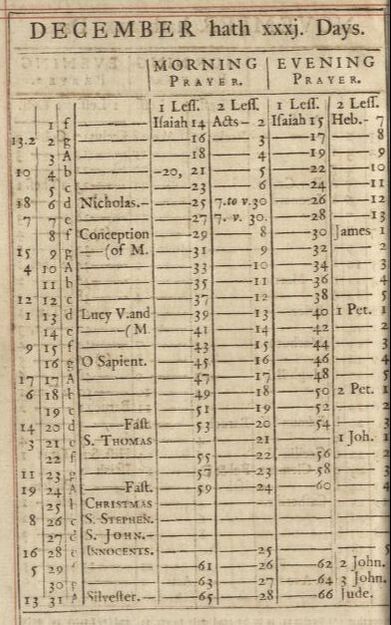
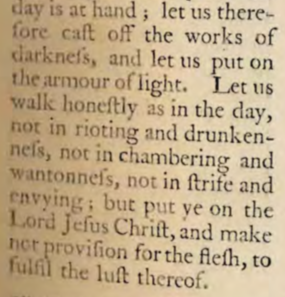
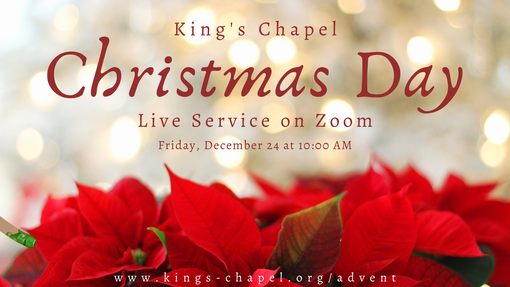
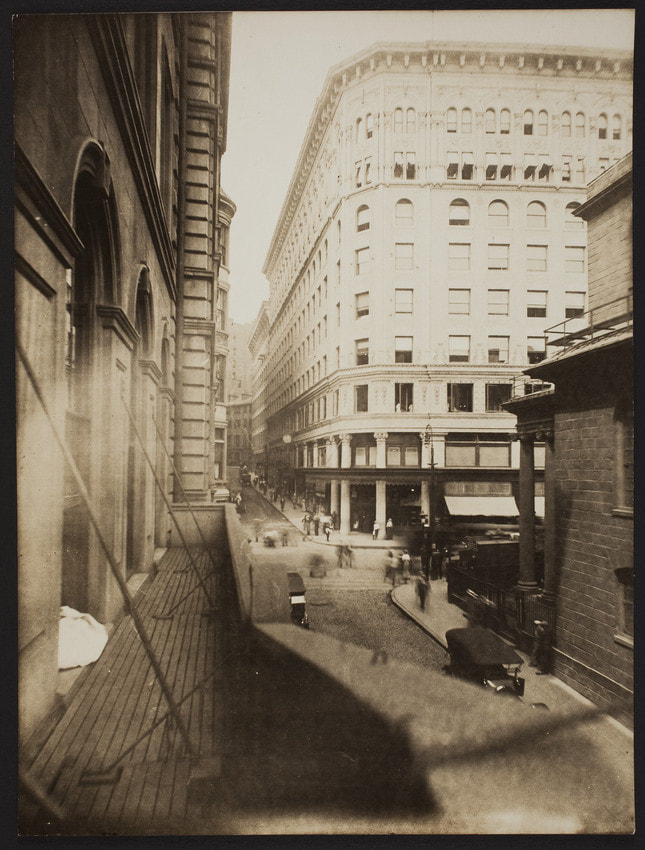
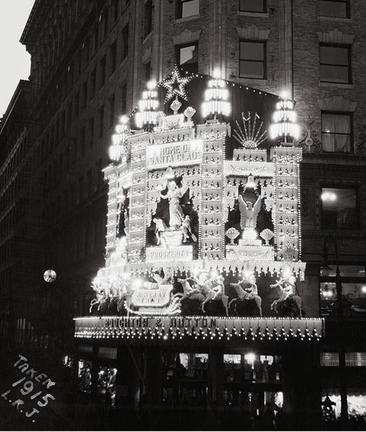
 RSS Feed
RSS Feed